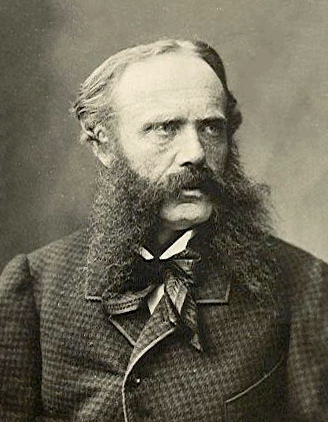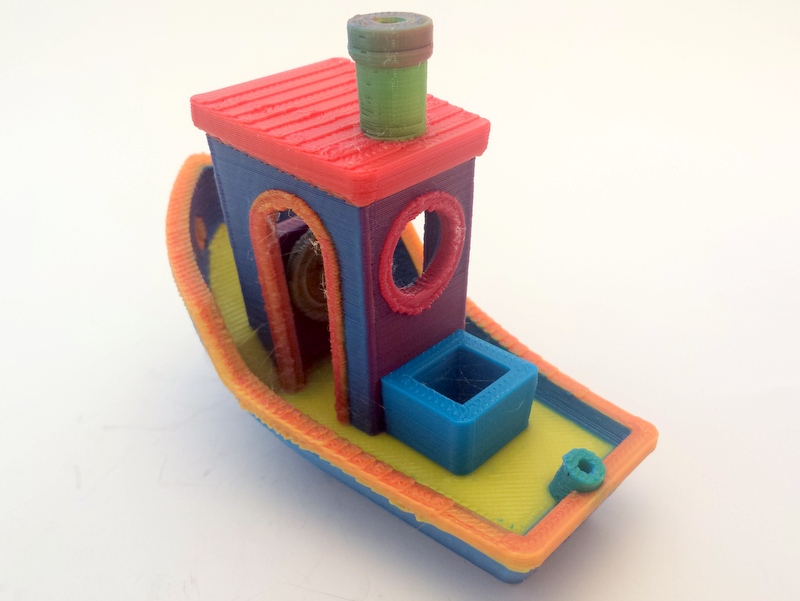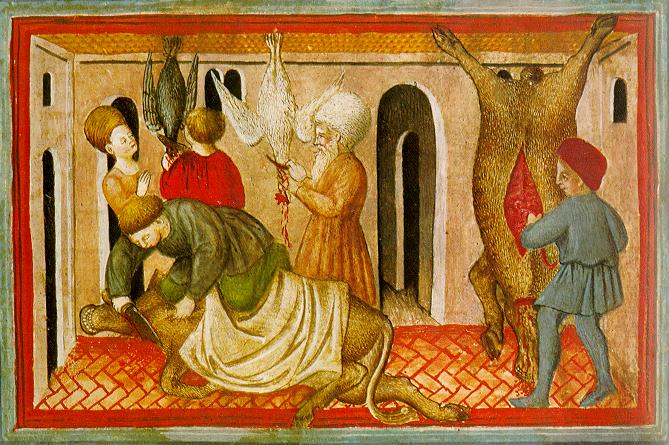|
Combat Application Tourniquet
A tourniquet is a device that is used to apply pressure to a limb or extremity in order to create ischemia or stopping the flow of blood. It may be used in emergencies, in surgery, or in post-operative rehabilitation. A simple tourniquet can be made from a stick and a rope, but the use of makeshift tourniquets has been reduced over time due to their ineffectiveness compared to a commercial and professional tourniquet. This may stem the flow of blood, but side effects such as soft tissue damage and nerve damage may occur. History During Alexander the Great’s military campaigns in the fourth century BC, tourniquets were used to stanch the bleeding of wounded soldiers. Romans used them to control bleeding, especially during amputations. These tourniquets were narrow straps made of bronze, using only leather for comfort. In 1718, French surgeon Jean Louis Petit developed a screw device for occluding blood flow in surgical sites. Before this invention, the ''tourniquet'' ... [...More Info...] [...Related Items...] OR: [Wikipedia] [Google] [Baidu] |
Defense
Defense or defence may refer to: Tactical, martial, and political acts or groups * Defense (military), forces primarily intended for warfare * Civil defense, the organizing of civilians to deal with emergencies or enemy attacks * Defense industry, industry which manufactures and sells weapons and military technology * Self-defense, the use of force to defend oneself * Haganah (Hebrew for "The Defence"), a paramilitary organization in British Palestine * National security, security of a nation state, its citizens, economy, and institutions, as a duty of government ** Defence diplomacy, pursuit of foreign policy objectives through the peaceful employment of defence resources ** Ministry of defence or department of defense, a part of government which regulates the armed forces ** Defence minister, a cabinet position in charge of a ministry of defense * International security, measures taken by states and international organizations to ensure mutual survival and safety Sports * Defe ... [...More Info...] [...Related Items...] OR: [Wikipedia] [Google] [Baidu] |
Richard Von Volkmann
Richard von Volkmann (17 August 1830 – 28 November 1889) was a prominent German surgeon and author of poetry and fiction. Some of his works were illustrated by his son, Hans, a well known artist. Biography He was born in Leipzig on 17 August 1830, the son of physiologist A.W. Volkmann. Richard entered medical school in Berlin and graduated in 1854. In 1867 he was appointed Professor of Surgery and Director of the Surgical Clinic at Halle where he remained until retirement. He was one of the most prominent surgeons of his day. He died in Jena. Achievements * Performed the first excision of carcinoma of the rectum in 1878. * Described Volkmann's Ischaemic Contracture in 1881. * Devised a splint and a spoon which bear his name. * His treatment of articular tuberculosis heralded attempts at preventive surgery. * In 1894 he described three patients with scrotal cancer who worked with paraffin and tar. * He was an early supporter of Joseph Lister, and helped the introductio ... [...More Info...] [...Related Items...] OR: [Wikipedia] [Google] [Baidu] |
Cuff Technology - Application Handle Cuff
A cuff is a layer of fabric at the lower edge of the sleeve of a garment (shirt, coat, jacket, etc.) at the wrist, or at the ankle end of a trouser leg. The function of turned-back cuffs is to protect the cloth of the garment from fraying, and, when frayed, to allow the cuffs to be readily repaired or replaced, without changing the garment. Cuffs are made by turning back (folding) the material, or a separate band of material can be sewn on, or worn separately, attached either by buttons or studs. A cuff may display an ornamental border or have lace or some other trimming. In US usage, the word ''trouser cuffs'' refers to the folded, finished bottoms of the legs of a pair of trousers. In the UK, while this usage is now sometimes followed, the traditional term for the turned up trouser hem is 'turnup'. History Between the 15th and 18th centuries, rich men often wore sleeve cuffs ornamented with fine lace. Catholic clergy have the cuffs of their choir dress ornamented with fine l ... [...More Info...] [...Related Items...] OR: [Wikipedia] [Google] [Baidu] |
BMC Biomedical Engineering
''BMC Biomedical Engineering'' is a peer-reviewed open-access scientific journal that covers the interdisciplinary field of biomedical engineering, encompassing aspects such as biomaterials, bioinformatics, biomechanics, and medical imaging. The associate editor An editor-in-chief (EIC), also known as lead editor or chief editor, is a publication's editorial leader who has final responsibility for its operations and policies. The editor-in-chief heads all departments of the organization and is held accoun ... is Sara Zandomeneghi, with Biyas Bandyopadhyay, serving as the assistant editor. The journal publishes research articles, reviews, and commentaries related to the application of engineering principles and design concepts to medicine and biology for healthcare purposes. Abstracting and indexing The journal is abstracted and indexed, for example, in: References External links * {{Official website, https://bmcmicrobiol.biomedcentral.com/ English-language journa ... [...More Info...] [...Related Items...] OR: [Wikipedia] [Google] [Baidu] |
3D Printing
3D printing, or additive manufacturing, is the construction of a three-dimensional object from a CAD model or a digital 3D model. It can be done in a variety of processes in which material is deposited, joined or solidified under computer control, with the material being added together (such as plastics, liquids or powder grains being fused), typically layer by layer. In the 1980s, 3D printing techniques were considered suitable only for the production of functional or aesthetic prototypes, and a more appropriate term for it at the time was rapid prototyping. , the precision, repeatability, and material range of 3D printing have increased to the point that some 3D printing processes are considered viable as an industrial-production technology; in this context, the term ''additive manufacturing'' can be used synonymously with ''3D printing''. One of the key advantages of 3D printing is the ability to produce very complex shapes or geometries that would be otherwise infeasi ... [...More Info...] [...Related Items...] OR: [Wikipedia] [Google] [Baidu] |
Open-source Hardware
Open-source hardware (OSH, OSHW) consists of physical artifact (software development), artifacts of technology designed and offered by the open-design movement. Both free and open-source software (FOSS) and open-source hardware are created by this open-source#Society, open-source culture movement and apply a like concept to a variety of components. It is sometimes, thus, referred to as free and open-source hardware (FOSH), meaning that the design is easily available ("open") and that it can be used, modified and shared freely ("free"). The term usually means that information about the hardware is easily discerned so that others can make it – coupling it closely to the maker culture, maker movement. Hardware design (i.e. mechanical drawings, circuit diagram, schematics, bills of material, printed circuit board, PCB layout data, hardware description language, HDL source code and integrated circuit layout data), in addition to the software that device driver, drives the hardware, a ... [...More Info...] [...Related Items...] OR: [Wikipedia] [Google] [Baidu] |
Defibrillator
Defibrillation is a treatment for life-threatening cardiac arrhythmias, specifically ventricular fibrillation (V-Fib) and non-perfusing ventricular tachycardia (V-Tach). Defibrillation delivers a dose of electric current (often called a ''counter-shock'') to the heart. Although not fully understood, this process depolarizes a large amount of the heart muscle, ending the arrhythmia. Subsequently, the body's natural pacemaker in the sinoatrial node of the heart is able to re-establish normal sinus rhythm. A heart which is in asystole (flatline) cannot be restarted by defibrillation; it would be treated only by cardiopulmonary resuscitation (CPR) and medication, and then by cardioversion or defibrillation if it converts into a shockable rhythm. A device that administers defibrillation is called a defibrillator. In contrast to defibrillation, synchronized electrical cardioversion is an electrical shock delivered in synchrony to the cardiac cycle. Although the person may still b ... [...More Info...] [...Related Items...] OR: [Wikipedia] [Google] [Baidu] |
The Economist
''The Economist'' is a British newspaper published weekly in printed magazine format and daily on Electronic publishing, digital platforms. It publishes stories on topics that include economics, business, geopolitics, technology and culture. Mostly written and edited in London, it has other editorial offices in the United States and in major cities in continental Europe, Asia, and the Middle East. The newspaper has a prominent focus on data journalism and interpretive analysis over News media, original reporting, to both criticism and acclaim. Founded in 1843, ''The Economist'' was first circulated by Scottish economist James Wilson (businessman), James Wilson to muster support for abolishing the British Corn Laws (1815–1846), a system of import tariffs. Over time, the newspaper's coverage expanded further into political economy and eventually began running articles on current events, finance, commerce, and British politics. Throughout the mid-to-late 20th century, it greatl ... [...More Info...] [...Related Items...] OR: [Wikipedia] [Google] [Baidu] |
Vietnam War
The Vietnam War (1 November 1955 – 30 April 1975) was an armed conflict in Vietnam, Laos, and Cambodia fought between North Vietnam (Democratic Republic of Vietnam) and South Vietnam (Republic of Vietnam) and their allies. North Vietnam was supported by the Soviet Union and China, while South Vietnam was supported by the United States and other anti-communist nations. The conflict was the second of the Indochina wars and a proxy war of the Cold War between the Soviet Union and US. The Vietnam War was one of the postcolonial wars of national liberation, a theater in the Cold War, and a civil war, with civil warfare a defining feature from the outset. Direct United States in the Vietnam War, US military involvement escalated from 1965 until its withdrawal in 1973. The fighting spilled into the Laotian Civil War, Laotian and Cambodian Civil Wars, which ended with all three countries becoming Communism, communist in 1975. After the defeat of the French Union in the First Indoc ... [...More Info...] [...Related Items...] OR: [Wikipedia] [Google] [Baidu] |
Vascular Occlusion
Vascular occlusion is a blockage of a blood vessel, usually with a clot. It differs from thrombosis in that it can be used to describe any form of blockage, not just one formed by a clot. When it occurs in a major vein, it can, in some cases, cause deep vein thrombosis. The condition is also relatively common in the retina, and can cause partial or total loss of vision. An occlusion can often be diagnosed using Doppler sonography (a form of ultrasound). Some medical procedures, such as embolisation, involve occluding a blood vessel to treat a particular condition. This can be to reduce pressure on aneurysms (weakened blood vessels) or to restrict a haemorrhage. It can also be used to reduce blood supply to tumours or growths in the body, and therefore restrict their development. Occlusion can be carried out using a ligature; by implanting small coils which stimulate the formation of clots; or, particularly in the case of cerebral aneurysms, by clipping. See also * Cent ... [...More Info...] [...Related Items...] OR: [Wikipedia] [Google] [Baidu] |
Exsanguination
Exsanguination is the loss of blood from the circulatory system of a vertebrate, usually leading to death. The word comes from the Latin 'sanguis', meaning blood, and the prefix 'ex-', meaning 'out of'. Exsanguination has long been used as a method of animal slaughter. Humane slaughter must ensure the animal is rendered insensible to pain, whether through a captive bolt or other process, prior to the bloodletting. Depending upon the health of the individual, a person usually dies from losing half to two-thirds of their blood; a loss of roughly one-third of the blood volume is Critical condition, considered very serious. Even a single deep cut can warrant Surgical suture, suturing and Inpatient care, hospitalization, especially if Trauma (medicine), trauma, a vein or artery, or another comorbidity is involved. In the past, bloodletting was a common medical procedure or therapy, now rarely used in medicine. Slaughtering of animals Exsanguination is used as a Animal slaughter, s ... [...More Info...] [...Related Items...] OR: [Wikipedia] [Google] [Baidu] |






